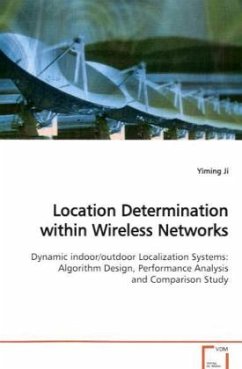Many location determination systems have recently
been proposed, and most of them are based on one or
more of the following four methods: lateration,
angulation, fingerprinting, and dead-reckoning.
However, existing systems require either dedicated
hardware support or extensive human interaction. This
book, therefore, provides a comprehensive study on
the design, analysis, and evaluation of both indoor
and outdoor localization systems. The book introduces
a new dynamic indoor localization tool called
ARIADNE, it also presents two multidimensional
scaling based algorithms for outdoor sensor networks.
Thus this research transforms indoor/outdoor
localization systems from high cost, labor intensive,
imprecise, and static technologies to affordable,
automated, accurate, and dynamic systems. Research
results are ready to be integrated with a wide range
of applications without requiring additional
infrastructure, other wireless technologies or manual
operations. Comparison study should help
professionals better understand current status of the
research in wireless location determination, and
theoretical analysis would also serve as valuable
standards for other research in the community.
been proposed, and most of them are based on one or
more of the following four methods: lateration,
angulation, fingerprinting, and dead-reckoning.
However, existing systems require either dedicated
hardware support or extensive human interaction. This
book, therefore, provides a comprehensive study on
the design, analysis, and evaluation of both indoor
and outdoor localization systems. The book introduces
a new dynamic indoor localization tool called
ARIADNE, it also presents two multidimensional
scaling based algorithms for outdoor sensor networks.
Thus this research transforms indoor/outdoor
localization systems from high cost, labor intensive,
imprecise, and static technologies to affordable,
automated, accurate, and dynamic systems. Research
results are ready to be integrated with a wide range
of applications without requiring additional
infrastructure, other wireless technologies or manual
operations. Comparison study should help
professionals better understand current status of the
research in wireless location determination, and
theoretical analysis would also serve as valuable
standards for other research in the community.








